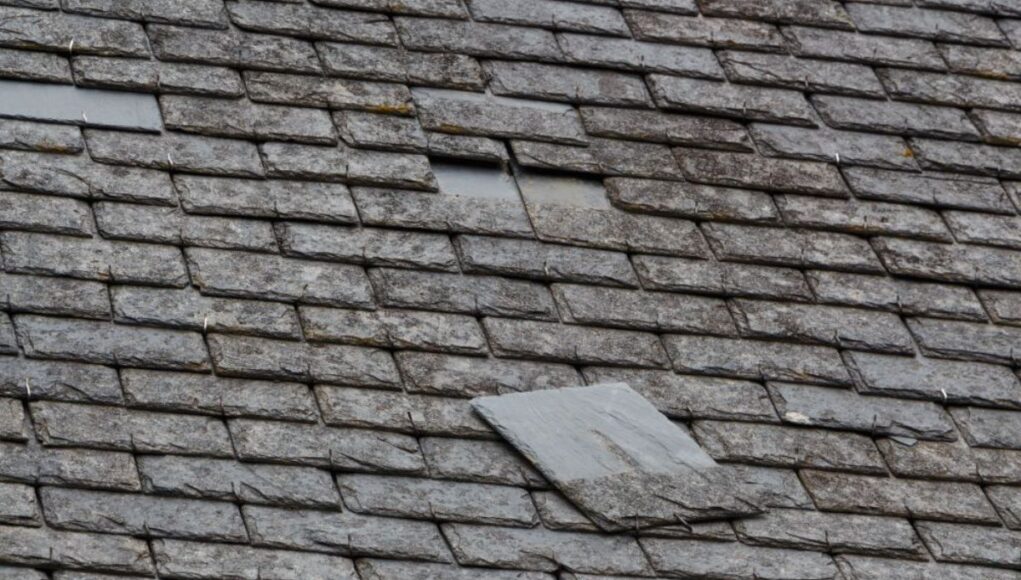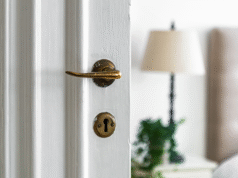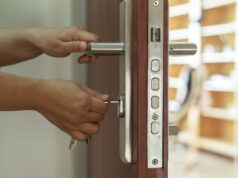Your home is your sanctuary, and the roof is essential in sheltering you from the elements. But how can you tell when it’s time to repair or replace it? Identifying roof damage early can save you money and prevent further issues. This guide will walk you through the key signs of roof damage, helping you maintain your home’s integrity and safety.
Visible Cracks and Splits
Cracks and splits in shingles are clear indicators of wear and tear. These can occur due to weather exposure or the age of the roof. Inspecting your roof for these visible signs can prevent water seepage and further deterioration. Addressing these issues early can save you from costly repairs.
Missing Shingles
Missing shingles are a sure sign that your roof needs attention. High winds, storms, and other weather conditions can cause shingles to become loose and fall off. If left unattended, missing shingles can lead to leaks and structural damage. Make it a habit to check your roof after severe weather events.
Roof Age
The age of your roof is a significant factor in determining its condition. Most roofs have a lifespan of 20 to 25 years, depending on the materials used. If your roof is nearing the end of its expected lifespan, it’s essential to schedule regular inspections and plan for a home roof replacement if necessary.
Granule Loss
Granules provide a protective layer for shingles, shielding them from the sun’s UV rays. Over time, you may notice granules washing into your gutters. This is a sign that your shingles are aging and losing their effectiveness. Keeping an eye on granule loss can help you determine when it’s time for a roof inspection.
Sagging Roof Deck
A sagging roof deck is a serious issue that requires immediate attention. This can indicate underlying structural damage or excess moisture buildup. If you notice any sagging areas, it’s essential to consult with a professional to assess the extent of the damage and take corrective measures.
Water Stains on Ceilings and Walls
Water stains on your ceilings and walls are often the result of roof leaks. These leaks can originate from damaged shingles, flashing issues, or other roof-related problems. Identifying water stains early allows you to trace the source of the leak and fix it before more significant damage occurs.
Mold and Mildew Growth
Mold and mildew thrive in moist environments, making your roof an ideal breeding ground if there are leaks. The presence of mold and mildew can indicate hidden water damage. It’s crucial to address mold growth promptly to maintain a healthy living environment and prevent structural issues.
Curling or Buckling Shingles
Shingles that curl or buckle are no longer providing adequate protection. This can be caused by improper installation, inadequate ventilation, or age. Inspecting your shingles regularly and addressing any curling or buckling can help extend the life of your roof.
Damaged Flashing
Flashing is used around roof features such as chimneys, vents, and skylights to prevent water infiltration. Damaged or corroded flashing can lead to leaks and water damage. Regularly inspecting and maintaining your flashing ensures it remains effective in protecting your home.
Ice Dams in Winter
Ice dams form when snow on your roof melts and refreezes at the edges, creating barriers that prevent proper drainage. This can lead to water backing up under your shingles and causing leaks. Preventing ice dams involves proper insulation and ventilation, ensuring your roof stays safe during winter.
Increased Energy Bills
A damaged roof can affect your home’s energy efficiency. If you notice a sudden spike in your energy bills, it could be due to compromised insulation or ventilation caused by roof damage. Addressing these issues can help reduce energy costs and improve your home’s comfort.
Debris in Gutters
Your gutters play a crucial role in directing water away from your roof and foundation. If you notice debris such as shingle granules, leaves, or branches accumulating in your gutters, it can indicate roof damage or clogged gutters. Keeping your gutters clean ensures proper drainage and prevents water damage.
Peeling Paint and Wallpaper
Peeling paint and wallpaper inside your home can be a sign of roof leaks. Moisture seeping through the roof can affect your interior walls, causing paint and wallpaper to peel. Identifying and addressing the source of the moisture is essential to maintain the aesthetics and structure of your home.
Frequent Pest Infestations
Pests such as rodents, birds, and insects can find their way into your home through roof damage. Gaps, cracks, and holes in your roof provide easy access for these unwanted guests. Regularly inspecting your roof and sealing any entry points can help prevent pest infestations.
Sunlight in the Attic
If you notice sunlight streaming into your attic, it means there are gaps or holes in your roof. This is a clear indication of roof damage that needs immediate attention. Sealing these gaps ensures your home remains protected from the elements.
Regularly inspecting your roof can save you from costly repairs and ensure your home remains safe and comfortable. By understanding and identifying the signs of roof damage, you can address issues promptly and maintain the integrity of your home.
If you’re unsure about the state of your roof, consider consulting with a professional for a thorough inspection and expert advice. Keep your home protected and your peace of mind intact by staying vigilant and proactive in your roof maintenance efforts.








